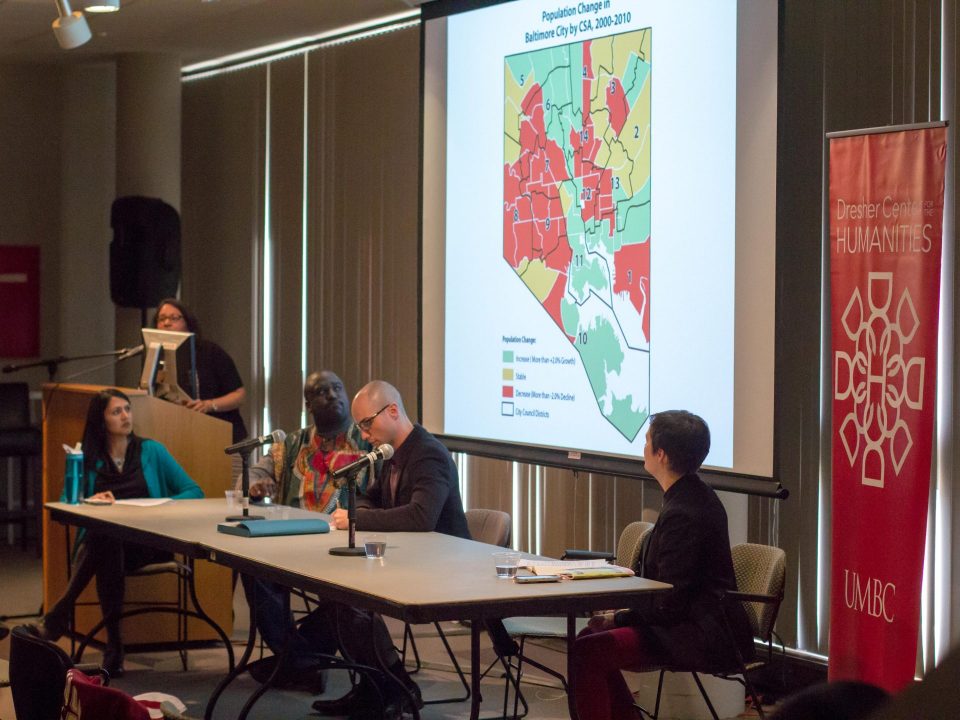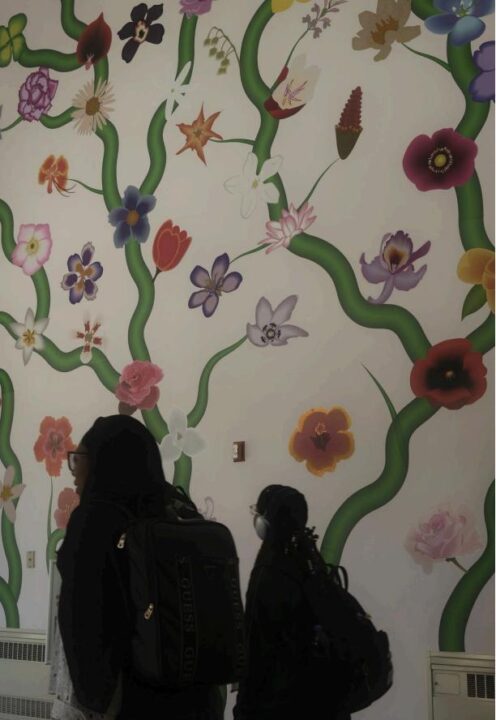In most neighborhoods, a “for sale” sign may be a positive change. Finally, nice neighbors who have recently adopted a Yorkie. But this scenario is unlikely for neighborhoods ranked Category 5 Hypersegregated by the National Center for Biotechnology Information.
A sure sign we are talking about Baltimore City.
The ‘Redevelopment and Justice in Baltimore’ Humanities Forum last Wednesday discussed the issues of gentrification in the wake of social and economic turmoil. A panel of influential officials turned eyes and ears towards the destruction of history and representation in the wake of urban renewal. Moreover, this expert panel interpreted the at-risk and disadvantaged populations in light of capital investment. From charts to story-telling, this event encompassed the diminished state of what once was an industrial-booming metropolis.
Lawrence Brown, Associate Professor of the School of Community Health and Policy at Morgan State University, introduced the audience to the serial, forced displacement known as colonization through Grandmaster Flash lyrics. “Don’t push me til’ I’m close to the edge!” Brown sang while the audience echoed. Interpreting the meaning of this recognized song, Brown spoke of historical events that shaped racial relations today. “We have never desegregated as a city,” Brown added. The fluent speaker discussed what it is like to live in Baltimore while being black. In Brown’s presentation, the key to overthrowing gentrification lay in the knowledge of how it came to be in the first place.
Another key to dismantling gentrification is observed in daily engagement. Felipe Filomeno, Assistant Professor of Political Science at UMBC, began his speech by acknowledging the immigrant population that survives constant neglect. Within the lens of structural remedies, Filomeno revealed that the southeast housing market improves while diverse areas decline.
These statistics were followed by Associate Director and Research Assistant Professor at the University of Baltimore Merrick School of Business, Seema D. Iyer. Iyer shifted the focus to the Baltimore Neighborhood Indicators Alliance, which provides objective research on a given neighborhood’s quality of life. Reports use vital signs as a tool to measure needs in definitive and approachable ways. The results showed a lack of organization among growing, stable and declining neighborhoods and led to a haunting question asked by Iyer: “How do we help citizens know what they don’t see?”
The answer may be simple. “Listen,” Nicole King emphasized. “You have to show up and listen.” The Associate Professor and Chair of American Studies at UMBC shared this antidote she found in her qualitative research. Her argument was centered on the imbalance between corporation development and resident oversight. King geared her argument with respect to the opinions of the masses and demonstrated this most through her invitation to listen.
As a last-minute addition, Roxcelanna ‘Nia’ Redmond appeared with a vibrant sign that read: “Gentrification stole my history and I am pissed.” These sentiments resurfaced in a string of adverse stories that plague the current and future generations of Baltimore. “We need you,” Redmond explained. “We need the youth to help us not only tell our stories but save our stories.” Her mission to build a physical location for the East Baltimore Historical Library raised awareness for the rich culture and people of color that are overlooked even now. But her message was clear:
“Tell our stories. Save our stories.”


